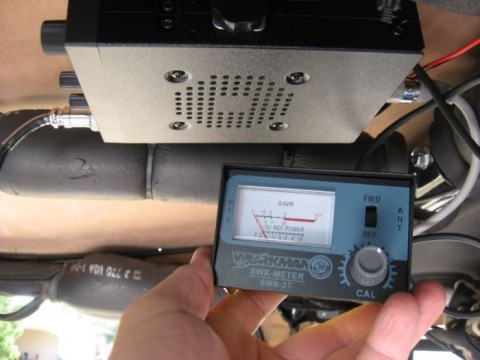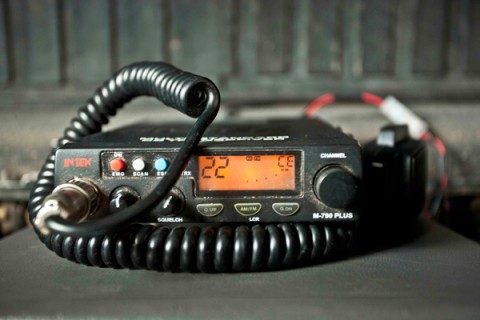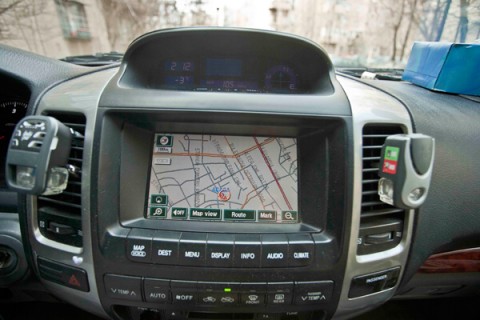
Deep jungle. Rain. Broken differential. Truck stuck in the mud. No phone signal and nothing on the CB stations.
Although this situation is not something most people would even consider ever being in, there's some of us who seem to think "This might happen to me". Of course, there's some other people who will smile and say "Oh! This has happened to me plenty!"

I've thought long and hard about this thing and what I came to realize was that, in these situations, you need a satellite phone. It sounds strange saying it, even now after we've used it on a few occasions and I've heard stories of friends who've been literally saved by the devices. It sounds strange because, in our mind the device relates to James Bond movies and MI6 villains building secret bunkers out in the wilderness. But you see the thing is, the wilderness where the fictional characters used to build their secret base is the same wilderness that some adventurers choose to explore with their vehicles. So there you have it, a simple, yet fairly odd explanation of how and why we need them.
Now that we've cleared the issue with the "Why?" question, the second part comes along and poses the "What?" question. What is the best brand of Satellite Phones? Which has the best coverage? What pay plan is the most efficient for my needs? What's the best alternative - buying or renting? All of these questions and reasons prompted us to start writing an article, sharing our experiences in the matter so that you would not need to search as much as we did until you find all of the information that you require.

The market of satellite communications is a fairly exclusive one, with only a few big companies providing extensive services. The first big name in the field: Iridium.
Until now, Iridium is the company with the best coverage of the planet. The Iridium phones have not evolved much from their first models. Their best offers nowadays include the 9505 and the 9555 models. The first, earlier one weighs in about 400 grams, with a 3 hour talk/35 hours standby times while the newer 9555 model weighs less than 270 grams and 25% better talk/standby time. Apart from this, the 9555 also comes with some other newer functions, such as USB data port, meters for battery/signal/ volume, call history, call timers, mailbox, address book and many more.
Most of these have updated software on the device and the newer technology incorporated is also to be taken into account. Because owning or renting a sat phone means you're going to remote locations, Iridium also provides external battery systems as well as fold up solar panels to add to the reliability of the devices they supply. The prices for the devices as well as the accessories vary quite a lot depending on the place where you buy or rent from. Since a sat phone is almost never a good purchase, unless you're a die hard explorer, we opted for the rental prices. The approximate price for a 9555 rental averages around 6 US Dollars per day in the off season time, peaking at 10 US dollars for peak season times. You can also snatch a bargain with prepaid bundles, where you can pay upfront for a number of minutes you choose, with the price per minute dropping a lot from 60 Minutes/ USD 1.79 to 600 Minutes/USD 1.09.

The next big player on the market is undoubtedly Thuraya. Unlike the Iridum grid, which is made up of LEOs (Low Earth Orbit) satellites which revolve around the planet, the Thuraya network relies on geosynchronous satellites that have fixed positions and revolve at the same speed as the planet, holding fixed coordinates in the sky. Because of this approach, the calls experience a lag time not found in the Iridium phones. This is due to the fact that the geosynchronous satellites float at a much higher altitude from the ground. However, the advantage of this system can be seen with regards to far superior quality in data streaming as well as phone conversations. With a data rate four times faster than the Iridium sat phones, Thuraya is a frequent option of those who require light internet navigation as well. Price wise, the Thuraya option can be slightly more expensive, but the price difference is clearly reflected in the superior quality of the conversation and data transfer.
The company invested a lot in the devices and is thus the leading sat phone company with regards to device complexity. The two devices worth mentioning here, still in production are the XT and the SG 2520 models.
The XT is possibly the toughest phone around. With a simple rough-looking design, this model was thought up to withstand the toughest conditions while still providing superior sound quality and reliability. The IP54/IK03 certified phone (standard for ingress protection for electrical devices, certifying dust, water, shock protection of the devices) can provide 6 hours talk time anywhere in the coverage area while also being able to keep in standby up to 80 hours.
At the other end of the spectrum, there is the 2510 model. With it's powerful antenna and compact features, the newest model is a 3-in-1 SAT/GPS/GSM phone. Weighing in at just 130 grams, it's the smallest satellite phone available today. This means that you don't just have a sat phone, but you can also use it's function as an ordinary mobile phone where the network is available (such as Morocco and most of Europe) to save loads on bills.

The Thuraya network has the second largest coverage of all satellite networks, managing all of Europe, North, Central and most of South Africa, most of Asia (excepting parts of Russia and North Korea) and Australia. One of the most interesting things, and last to be mentioned here, is the Thuraya Payphone. Because there are indeed villages and communities without the possibility of mobile phone signal or a constant satellite phone connection, Thuraya brought out a special payphone that can be used with most cards as well as special pre-paid Thuraya cards. It looks, feels and calls just like a payphone but it links directly to the satellite and does what all others do: connects people.
Tied for third place are the two companies with one relatively cost efficient product each. The Inmarsat device can be used for up to 8 hours continuous talking and 100 hours worth of standby. Just like the Thuraya XT, it has an IP54 certifications, meaning it's dust/splash/shock resistant, being able to operate in temperatures between -20 and +55 degrees Celsius. It's been built for practicality, with large buttons and high visibility screen, for ease of use with gloves on or goggles. The device operates over global geostationary satellites, which gives it a reliability of the system into the 2020s, with significantly less call dropping, unlike LEO structures.

The Globalstar produces the GSP - 1700 satellite phone device which rivals the Inmarsat phone and approaches the performances of the Thuraya XT, being a few grams lighter than it. With 4 hours talk time and 36 hours of standby time, the 1700 is slightly less reliable than it's competitors. However, a particular system that the Globalstar device has is the CDMA digital voice quality. With this particular function, the two speakers enjoy crystal clear voice quality anywhere, anytime. With a worldwide coverage (Excepting South Africa, South America and the South Pole), the Globalstar is a pretty good choice for an expedition phone.
We've not had the chance to test out all of the devices and there is almost no way that anyone can recommend the perfect device because there is no such thing. Each network and each device is designed in a particular way for a particular sort of task. Although they are comparable in some regards, LEO and geosynchronous satellite phones will always have a world of a difference between the two of them. We tried our best to save you time and effort in researching what each phone does for you and each of the network's advantages and particularities. Now, it all comes down to where you and your team have to visit, the terrain, the country and the need for communications.

CB Radio For Off-Roaders The Off-Roaders guide to choosing a CB radio - While not as commonplace as it was in the 70's, CB radios are still widely used by off-roaders as a primary source of communication.

Offroad Communications - CB Radio - A lot of the times, while preparing a car for challenges or expedition, we tend to focus on the cars more than on the adjacent issues. But, since some are more important than others, the issue of communications in the car, between cars and with third parties came up in a discussion a few days ago.

Electronic Myths Off Road - For years, I had very little interaction with the electronic aspects in cars on off road tracks. The Land Rover I use had very simple systems, with only a ECU that managed piston synchronization, the electronic injection and a few other things. No ABS, no traction control or any of the newer things. And it did everything just as it should, perfectly.